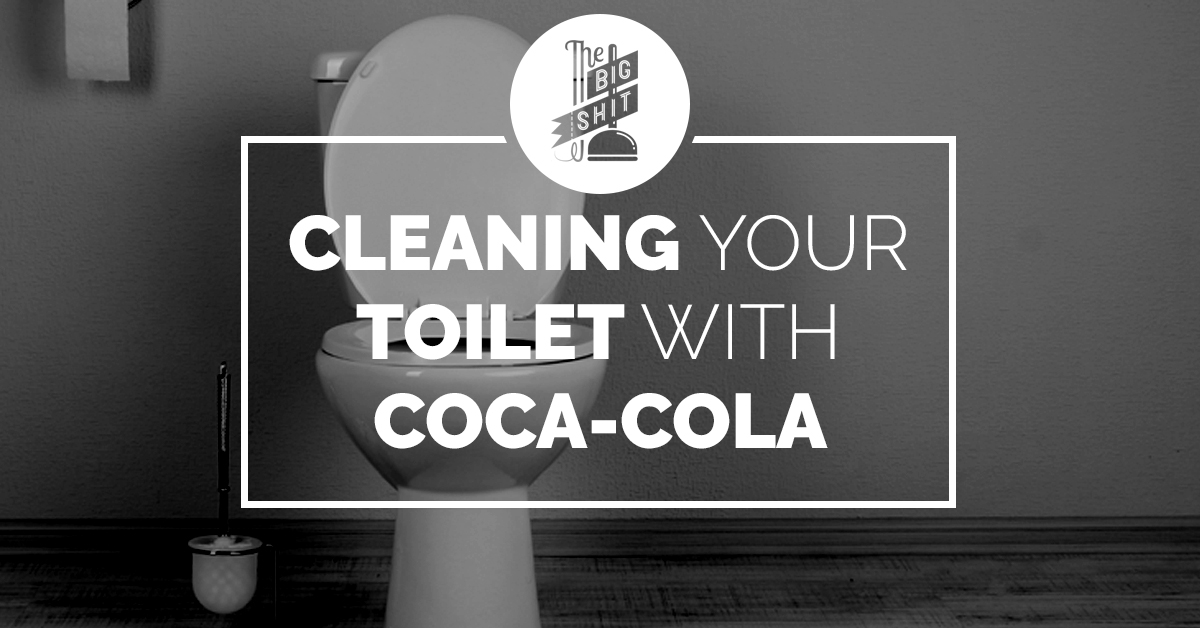
20 Mar Cleaning Your Toilet with Soda
There is a wealth of information on the internet about unusual life hacks, many of which have to do with the multipurposed versatility of world-renowned soft drink, Coca-Cola. Coca-Cola has been a cultural icon for over a hundred years, with its bottle shape and logo not only trademarked, but probably more widely recognized around the globe than just about anything western civilization has produced so far. It stands to reason that a lot of notoriety, good and bad would be attached to something so recognizable.
History
Coke was born in an era of cure-all elixirs and tonics, and even now, the reputation of having more than one use still clings to it today. As well as being a medicine when its ingredients were better suited towards painkillers than fizzy drinks. Alcohol, cocaine, kola nut, essential oils, or other mysterious ingredients have been the stuff of legends, but today, its ingredients are fairly basic, and standard in the soda industry.
Basic Ingredients of Cola
- Water
- sugar (usually high-fructose corn syrup, or cane sugar)
- caramel coloring
- phosphoric acid
- natural flavorings
- caffeine
The ingredients are mixed together to give cola its distinct flavor and then carbonated and bottled for your enjoyment.
You probably won’t find any of these ingredients in industrial toilet cleaner. However the phosphoric acid does give cola a relatively high acidity, rating at pH of 2.8 (with distilled water being a 7 and basically neutral). Though very acidic, its molarity (molecular concentration) isn’t considered dangerous to our bodies the way other acids are, namely the acids produced by our own stomachs. However this acidity just might be what gives Coke its versatility, not only as a tangy, sweet beverage, but also as what some people claim to be a highly-effective cleaner. Phosphoric acid is also an emulsifier, which means it does a lot of work in cutting grease as well as breaking down other lipids. Since it is carbonated, the effervescing factor of this drink might have some kind of mechanical properties to cleaning as well. Literally breaking apart substances with the power of bubbles!
How to Clean Your Toilet with Cola
The application of using Coke to clean can vary, from applying it to stains in fabric, to oil spots in the driveway, and last but far from least, using it to clean a dirty toilet. The method for cleaning a toilet is simple.
- Pour the desired amount of cola into the toilet, making sure that it coats the area you need to have cleaned.
- It will fizz up due to the carbonation.
- Give it an hour to soak, allowing it to work its magic on the hard water stains, calcium deposits, rust, etc.
- Use a toilet brush to scrub the bowl
- Flush!
The toilet is clean! Without the harsh chemicals, abrasives, and noxious cleaners we have been told to use on the bowl for nearly as long as there have been toilets.
The Science Behind Cleaning with Cola
The science behind this is plausible. Acid is a go-to for many cleaners, not to mention being highly effective in breaking down lipids and other proteins. This is why Coke is a great marinade for tough meats in breaking down connective tissue, with sugar and acids being extremely complementary in their ability to penetrate the surface area of anything from beef to turkey to ham and work away at the tough tissue that makes meat hard to break down otherwise. The bubbling action can certainly work to break apart substances at a microscopic level. Even plain baking soda and water will cause this reaction and that has been a proven cleaner for ages. So why not?
There might be better reasons to use other cleaners for your toilet. After all, the mechanical process of using a brush might have more to do with getting your porcelain to sparkle than the curative powers of Coke. The disinfectant ability of a soft-drink probably isn’t in the same category as other cleaners either. But it doesn’t do any harm to clean your toilet regularly. There are numerous experiments featured on YouTube which test this theory. So you might as well mix things up a little bit and see what works best for you!
